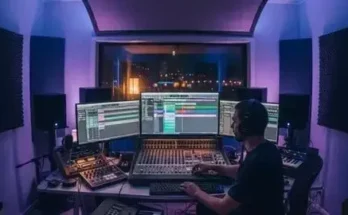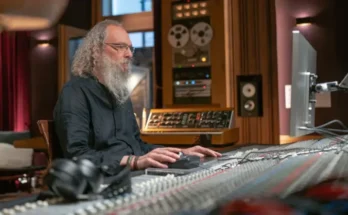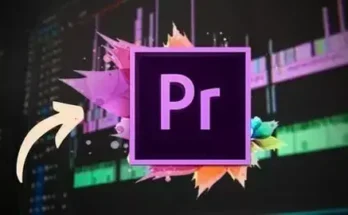P2P | 1.1.2010 | 5.32 GB
Filmed in HD, this the most powerful instructional series ever created for music production. “The Art & Science of Sound Recording” looks at everything from soundproofing to mixing, and from recording guitar, bass, keyboards, drums and vocals, to recording a choir. Fellow professional engineers & producers join Alan Parsons in this top quality, practical, and cutting-edge guide, including Jack Joseph Puig, John Fields, Elliot Scheiner, Jack Douglas, Tony Brown and Chuck Ainlay. Artists and musicians interviewed include Michael McDonald, Taylor Hawkins, Nathan East, Rami Jaffe, Carol Kaye and Erykah Badu.. This invaluable instructional DVD set applies classic, old school recording experience to the modern recording scene, and is certain to be a standard work on the subject for years to come. Along with its fully interactive website, “The Art & Science of Sound Recording” is a complete course in modern recording.
DVD ONE
1.An Introduction To Recording
Alan introduces the program from the GRAMMY museum in Los Angeles, tracing the development of
sound recording from Edison to MP3.
2.Studio Acoustics
We look at the science of sound and acoustics from the perspective of constructing a brand new
studio space at Keyfax NewMediaÆs California production facilities. Alan speaks with Auralex
senior acoustician Gavin Haverstick and to studio designer Chris Pelonis about isolation,
room modes, budgets, studio layout and more.
3.Microphones
Filmed mainly at his own studio in Santa Barbara, Alan investigates microphones from the ground
up. What is a mic? How do the various types of mic work? Polar patterns, characteristics,
applications and techniques. Input along the way from self-confessed mic junkie John McBride
(from Blackbird studios in Nashville), Jonas Brothers producer John Fields, and top film /
orchestral engineer Simon Rhodes from Abbey Road.
4.Consoles And Controllers
Starting with Alan re-discovering the EMI desk on which he recorded Dark Side Of The Moon
(that now resides in Los Angeles), Alan looks at the most complex-looking piece of equipment
in any studio, real or virtual. Knob-by-knob explanations are followed by an experiment with
analog summing vs. mixing in the box, and finally a look at the role of controllers in the
world of DAWs. With some invaluable insights from Jack Joseph Puig, Patrick Leonard,
and Niko Bolas.
5.Digital Audio And Computers
Reel-to-reel tape recorders are obsolete. Recording has become a totally computer-based
activity. What can be learned from the veterans of the analog recording art and what knowledge
can be carried over to the digital world? Alan takes us on an extensive tour of the equipment
currently available hardware, interfaces, applications, software plug-ins and disc drives.
With the help of producers like John Shanks and artists like Michael McDonald, he investigates
both the advantages and pitfalls of record-making in the 21st Century.
6.Monitoring
We visit Record One in Los Angeles, home to Thriller among many others where Alan quizzes
Ocean Way Recording owner and speaker designer Allen Sides. Not everyone can trade their
house for a set of loudspeakers, though, and this section covers all the bases from high-end
studio systems, through to classic nearfields such a YamahaÆs NS10s, to headphones and even
ear buds. What is important about monitoring is that you can trust what you hear and this
section clearly sets out the parameters and practices to follow.
7.MIDI
MIDI began life as a keyboard-aid but it went on to help establish the digital revolution
that has transformed to entire recording landscape. Alan talks to MIDI founder Dave Smith,
then looks at the ways MIDI recording is still widely used in film, dance music, and many
other genres. The section explains exactly what MIDI is, and can do, in simple terms. Finally!
DVD TWO
1.EQ
A large part of being able to conduct a good recording is knowing how to listen. This section
not only provides fact-based answers as to EQ frequencies and the various ways they can be
adjusted, it also gives you tools that you can use to train yourself how to æhearÆ more
analytically.
2.Compressors And Limiters
A complex subject, and one frequently misunderstood and much argued about. Alan defines
terms, explains parameters, provides instrument-by-instrument examples, and then explains the
consequences. Universal AudioÆs Bill Putnam Jr. is interviewed, plus there are wonderful
insights into use and misuse from Steve Marcantonio, Niko Bolas, John Fields, and Allen Sides.
3.Noise Gates
We discover the invention and development of the noise gate and examine both its original
purpose and eventual role in sound recording. A range of gate applications are set up and
explained, including changing sound envelopes, creating our own gated reverbs, side-chaining,
and more. Both hardware and software gates are featured in this section, along with
explanations of their relative merits.
4.Reverb
This section traces the history and progress in artificial reverb technology, then takes a
parameter-by-parameter look at digital reverb settings, hardware and software reverb
products, and application of reverb to individual instruments and entire mixes. Interview
clips from Elliot Scheiner, John Shanks, and others complete this highly revealing section.
5.Delays
Related to the earlier section, Delays looks at the application and use of this time-based
effect along with its cousins: flanging, phasing, and multi-tap FX. There are some
fascinating hands-on experiments with different type of delay in this section.
6.Band Tracking Session
Alan wrote a brand new æAlan ParsonsÆ track for this DVD set and this section offers a
fly-on-the-wall (or reality show û take your pick) seat in the studio. How does Alan turn a
drum loop and chord sequence into a song? WhatÆs the value of a æliveÆ tracking session,
where musicians actually get to play together? What are the issues? All and more are
revealed in this section featuring Simon Phllips on drums, Nathan East on bass, Tim Pierce
on guitar, and Rami Jaffee on piano. This is a real gem.
7.Vocals
Probably the most crucial û and complex û part of modern recording. This section looks at
and talks with singers both experienced and inexperienced and vocal techniques from both
singerÆs and engineerÆs perspectives. Michael McDonald offers priceless information, as do
a raft of producers, engineers, and vocal coaches. Techniques such as comping, and pitch
correction are both looked at in detail.
8.Internet Recording
Few people doubt that the internet represents æaÆ if not ætheÆ solution as to how we will
conduct recordings in the future. Question is, right now, exactly how? We look at one of
the currently available systems on a vocal session. ItÆs 9AM for Alan in California while
the singer, working from his own studio Michigan, is ready for lunch. ThatÆs just one of
the issues.
DVD THREE
1.Drums
Simon Phillips provides one of the most comprehensive looks at the art and science of
recording drums ever undertaken. From tuning, to acoustics, to mic usage, to recording
approaches, Simon and Alan provide the tools to getting a great drum sound û one of the
consistently most elusive aspects of modern recording. Drummer of The Foo Fighters, Taylor
Hawkins is also interviewed.
2.Keyboards
From string pads, to FX and beatmaking, to genuine Hammond B3 or piano playing the role
of keyboard player can be wide and deep. Alan looks at both the playing and programming
aspects of recording keyboards. How to mic an acoustic piano, how to mic a Leslie speaker
cabinet, and also how to manage keyboard parts and sounds so that they work within a
track. Foo Fighters / Wallflowers keyboardist Rami Jaffee is the featured player in this
section.
3.Bass
Bass may not be the most complex instrument to record but its role in rock, pop, and hip-hop
is absolutely crucial. Alan discusses bass recording techniques with Nathan East during a
live tracking session for a new Alan Parsons track, All Our Yesterdays and also meets one
of his long-time bass heroes, Carol Kaye, who contributed to many groundbreaking records
with Phil Spector, Quincy Jones, The Beach Boys and others in the sixties and seventies.
4.Guitar
Guitar recording has developed considerably since Alan first helped to record guitar
heroes such as George Harrison, Jeff Beck and David Gilmour back in the 1970s. Alan
visits top LA session man Tim Pierce at his own studio in L.AÆs San Fernando Valley
and looks at parts, sounds, effects and approaches in this fascinating look at how guitar
and guitar processing has evolved over the past twenty or thirty years.
5.Acoustic Guitar With Voice
A common recording conundrum is tackled in this section. How do you record both, simultaneously
without one bleeding into the other? A range of physical and technical solutions are provided.
6.Recording A Choir
Every school, college, and church has a choir that would like to be recorded for posterity.
Alan visits a California High School and captures a magical performance not in a studio, or
concert venue û but in the challenging setting of a multi-purpose school hall. Learn how a
careful set-up and skilled post-production can elicit a wonderful result.
7.Approaches To Live Recording
The Alan Parsons Live Project at The Grove Theatre in Anaheim, California, filmed early in
2009, provides a colorful backdrop for this brief but informative section on the challenges
posed by live recording in a concert setting.
8.Mixing
The mix is where the rubber hits the road for any recording. Conducted primarily at LAÆs
Record One studios, where Michael JacksonÆs last three albums were recorded and mixed, Alan
takes us through every stage of a mix from preparation to delivery media in this fascinating
and extensive section. Good working practices (consolidation, track sheets, notes and more)
are proposed, along with the chance to see so many of the programÆs previous technical sections
EQ, reverb, digital audio and computers û come to life. A variety of mixing settings, from
working with an analog console to wholly ôin the boxö are shown and discussed.
9.Dealing With Disasters
A bad day in the studio can sometimes turn into a complete crisis. The final section looks at
ways to avoid getting into as well as climbing back out from û disastrous recording situations.
[toggle title=”Home page”]https://tinyurl.com/y3hkkkab[/toggle]

http://alfalink.to/1846acc286f352bdf35f
Please REPORT in Comment Broken Links




